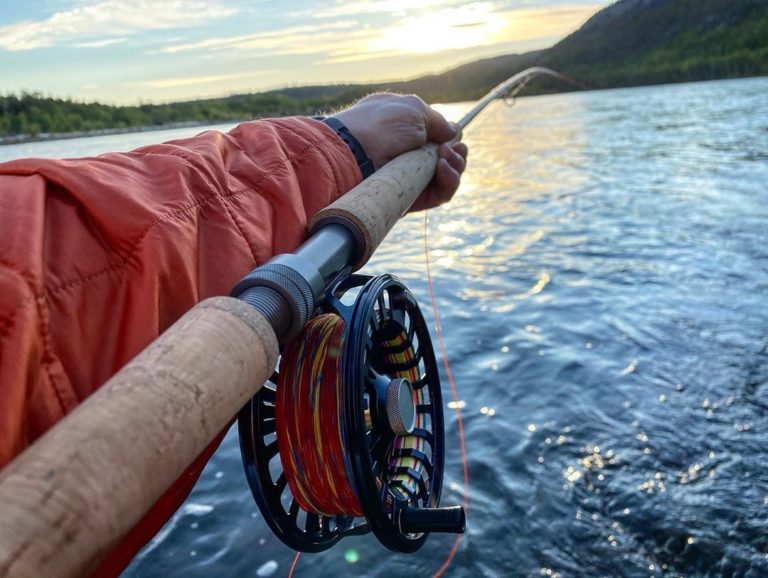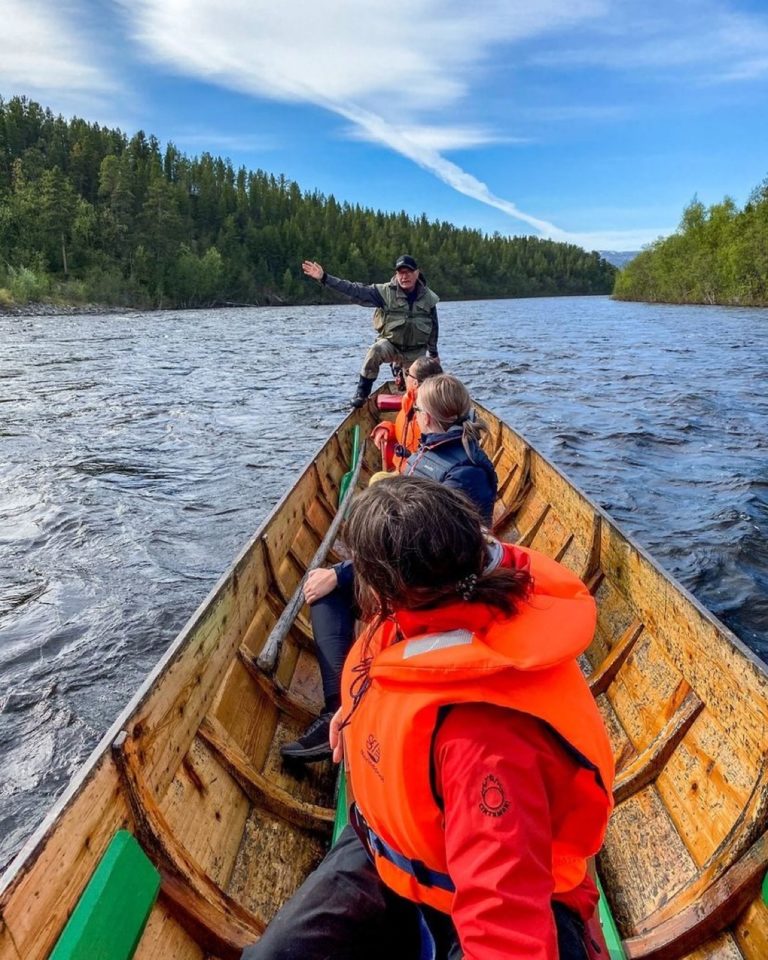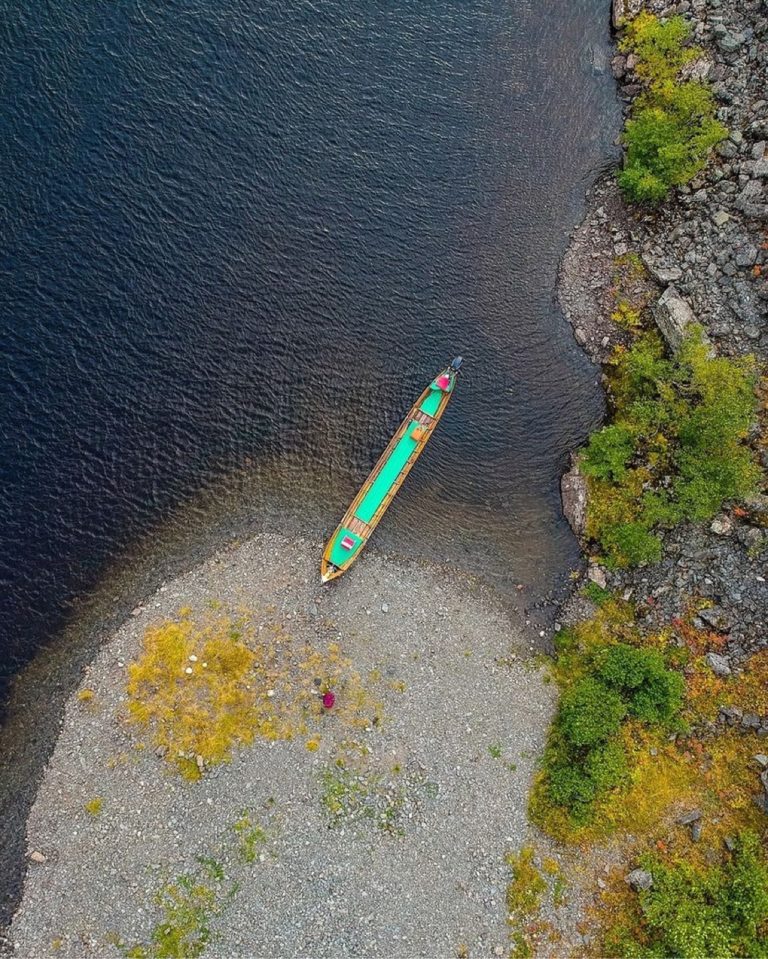Alta River is the dream of most salmon fishers. Traditionally, the river is considered one of the world’s best salmon rivers, especially known for its large-scale salmon.
Although the river is both world famous and legendary, it is not the right of everybody to fish here. 700 fishing licenses are distributed by lottery among the locals in Alta, Loppa and Kautokeino. About 4,000 people from these three municipalities sign up for the fishing license every year.
However, it is still the case that non-residents can fish in the river during certain periods. And they gladly pay for it. Wealthy salmon fishermen have paid up to several hundred thousand Norwegian kroner for fishing licenses, despite the fact that the salmon must be released back into the river. Every year, about 1,200 eager salmon fishermen from the rest of the world sign up and participate in the draw for 70 cards that are sold to so-called “out-of-town fishermen”, ie fishermen who do not belong to Alta, Loppa or Kautokeino municipality.
The first regulation of river fishing that is known was at the local village council in 1725. The protocol stated that 34 men declared that they wanted to participate in organized salmon fishing. These fishermen were divided into two river companies that were to fish from each side of the river, and the following year they changed sides. This is considered the prelude to the Alta Laksefiskeri Interessentskap (ALI), which is currently responsible for regulating fishing in the river.
ALI owns the fishing rights in the Alta River and represents the landowners who have river rights. To have river rights, you must own and operate land that produces enough hay to feed a cow for an entire winter, which is equivalent to 2,500 kg dry hay or 10,000 kg silo. This applies within a limited area along the river valley and you must be resident in the same area. The rule was introduced by the county governor of Finnmark in 1880.
In the middle of the 19th century, the English who were associated with the copper mines in Kåfjord became interested in the river. Sir Thomas, works director of the mining company in Kåfjord, and three other Englishmen were allowed to fish in the river for as long as they wanted. In 1862, the Duke of Roxburghe wanted to lease the entire river, and one of the conditions was that fishing should be free for locals until St. Hans. This was the forerunner of the current scheme of popular fishing from June 1 until St. Hans. The Duke’s family has been more or less regular guests in the river since 1863.
What is a “staker”?
The English engaged local acquaintances as boatmen, or “staker” in Norwegian. The boats were light and narrow, and stuck 3-4 inches into the water. The boats were not rowed, but pushed up against the current with stakes. In each boat there was a man in the stern and one in the bow. These boat people are called stakers and are still used during salmon fishing to this day. The job has traditionally been inherited from father to son for several generations.
The stakes are employed by ALI and are hired, among other things, for out-of-town fishing. In many places in the river, it is advantageous to fish from a boat, in addition to the fact that the stakes are very well known in the river. Tor Kjetil Wisløff, who owns and operates Sorrisniva, has ridden a river boat on the mighty and magnificent Alta River since 1964. Throughout the summer, he guides locals and guests from all over the world through the impressive landscape.
It was only after World War II that salmon fishing in the Alta River became available to all the inhabitants of Alta. Today, everyone who wants to fish in the river must sign up for a fishing license draw early in the year. There is a draw for local fishermen and one for out-of-town fishermen.
To this day, dukes still come to the Alta River for fishing, in addition to the fact that His Majesty King Harald of Norway has taken the trip to the world-famous salmon river over 25 times.
This is how the draw takes place
In the card draw, which usually takes place at the end of February (out-of-town) and the beginning of March (local fishermen), you are assigned a number that indicates which number you are in the queue to buy a fishing license. If you have card number 1, you can choose freely among all the fishing licenses. If you have card number 80, you are number 80 in the row to choose from the remaining fishing licenses. This continues until all the fishing licenses have been sold.
The river is divided into five zones and in these zones the number of fishing licenses varies. The names of the fishing grounds are a mixture of Norwegian, Sami and Kven names: Sautso, Sandia, Vina, Jøraholmen and Raipas. Several of the fishing spots are only accessible by boat and this especially applies to the fishing spots in the upper zones. Among other things, Mikkeli, known for being the most sought-after fishing spot, is only accessible by boat.
Although salmon fishing is reserved for those with fishing licenses, there are other ways to experience the Alta River. During the conservation period (12:00 – 18:00 every day) Sorrisniva offers riverboat safaris and from Alta Canyon there is a great view over the river. Together with GLØD Explorer, you can go canoeing in the same surroundings.





